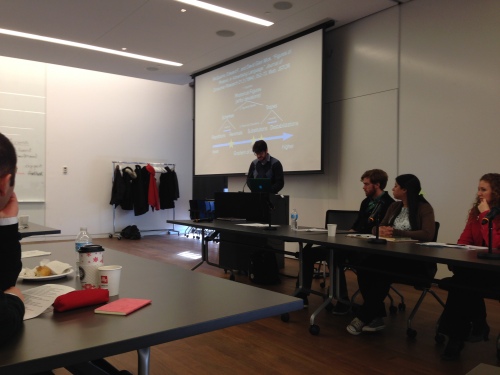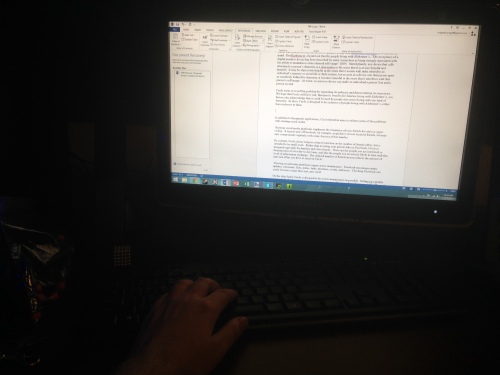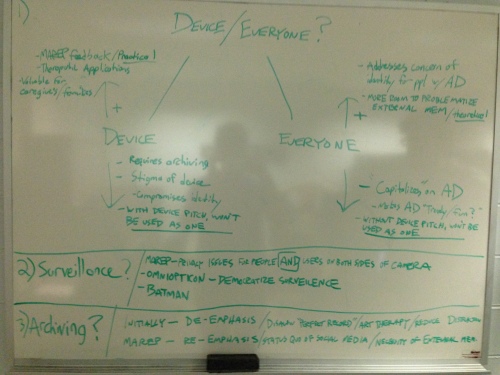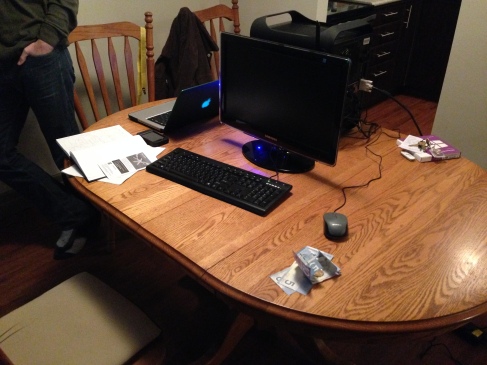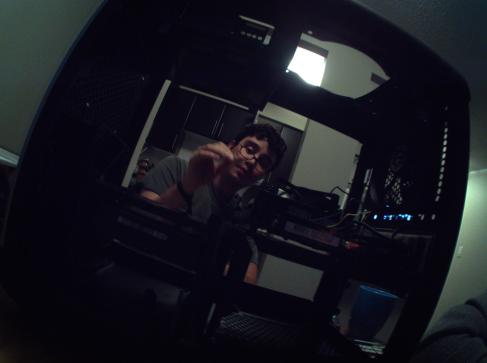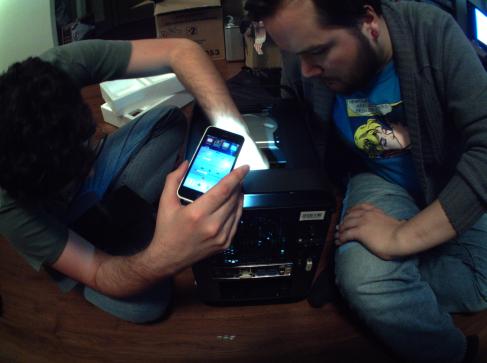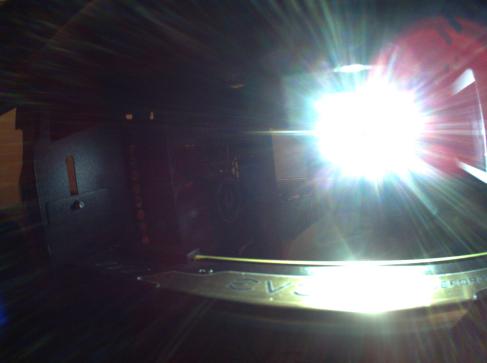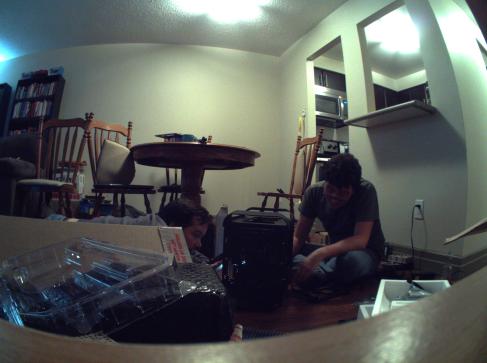At the risk of making it look like all I do is sit around and listen to CBC Radio, I’m posting yet another piece of their programming from 23 October:
Q Debate Special: Is the Internet Making Us Smarter or Stupider?
In this three-part interview, Jian Ghomeshi moderates a discussion that addresses the Internet anxiety we’ve been encountering in this course. Clearly, Nicholas Carr and Viktor Mayer-Shönberger are not alone. Participants include:
Clive Thompson, author of Smarter Than You Think: How Technology is Changing our Minds for the Better.
Steve Easterbrook, professor of computer science at the University of Toronto
David Weinburger, senior researcher at the Berkman Center for Internet & Society at Harvard University, co-director of Harvard Library Lab.
Adam Hammond, sessional lecturer at the University of Toronto
and
Blair McMillan, patriarch of a family who has renounced all post-1986 technologies.
As discussion points, the debate includes audio clips from the likes of Richard Dawkins, Raffi (yes, Baby Beluga Raffi), and reddit co-founder Alexis Ohanian.
The whole program is about as long as a soccer game, including stoppages, so I’ve included a summary of the main points below.
Steve Easterbrook, arguing that technology makes us stupider, complains that his argument is more difficult to maintain because nobody wants to feel like technology is making them stupid. His opinion that technology is mostly harmful, however, seems to be the most widely accepted. Perhaps instead people are all too willing to blame their stupidity on the Internet. But never mind that.
Easterbrook’s concerns are essentially rooted in the argument that the rate of technological change is now faster than our ability to adapt to that change. By the time we figure out how best to teach children about technology, for example, the next technology has already made the new curriculum obsolete.
But Clive Thompson doesn’t buy Easterbrook’s claim that we can’t adapt to these changes. New tools may let us (even force us) to develop new patterns of thought, but he says “we’ve conquered this stuff before.” He gives the example of the first coffee houses, which were met with resistance from scholars who feared that nobody would ever get anything done because they were just sitting around chatting all the time. “It was the Facebook of its day,” Thompson laughs. He even suggests that the telegraph may have destabilized society more than the Internet has.
In response, the ‘acceleration of invention’ position held by Easterbrook warns that “we won’t have time to catch up” to these newer, rapidly developing technologies. Though the invention of writing, coffee houses, printing presses, and telegraphs all produced similar anxieties, the slower rate of technological change for these earlier technologies allowed for time to pass and people to get used to them. If technological development continues to accelerate, the argument goes, we won’t have time to socially or biologically accommodate these changes.
Here, however, the debate falls into a perpetual loop. The rate-of-change argument contradict what we know about brain plasticity, that our brains change depending on lived experience. Both Easterbrook and Thompson admit to knowing little about neurology (and I probably know even less than either of them), but I’m still comfortable saying that our neural networks change depending on which neurons fire: survival of the busiest. Doesn’t that mean that our brains will adapt to accelerating technological change, even during a single lifetime, a single year, month, or week? Won’t our changing brains allow us to adapt socially to these new conditions of human existence? I guess I should let someone else conduct the study that answers that question…
The reason we fall into a loop is that people use the plastic brain model to argue both sides of the debate. On the one hand, the Internet is changing our brains and that’s bad. On the other, the Internet is changing our brains and that’s good. When questioned by Ghomeshi, Adam Hammond cites Nicholas Carr to explain how, as a literature scholar, it now takes a “superhuman effort to do [his] job and read literature.” According to Carr, who bases his argument on the plastic brain model, surfing the web changes how our brains process information, disrupting our ability to focus deeply for a long time. That Internet technology changes the way our brains think is therefore construed as a negative thing.
But if the Internet is changing our brains, doesn’t that mean that we are adapting to these new conditions? As David Weinberger joins the conversation, he wonders whether the debate is actually concerned with whether the Internet is “making experts stupider or making us stupider about things that we don’t need to be smart about.” With the Internet, Weinburger says, we are gaining many things, including the ability to look up information that we don’t need to know. He seems most excited, however, by networked information and its tendency to develop personal knowledge in a way that always concedes that public knowledge is “bigger than” the individual. These sound to me like promising developments for the self-obsessed, personal-experience-driven human brain.
Thompson adds that while these new tools let us “develop productive patterns of thought,” the old patterns can still be productive. Hyperlinking may encourage skimming, but that doesn’t mean that we have to abandon deep reading. “It’s simply wrong to assume it’s impossible to do these things,” he says, proudly recounting his personal successes reading long novels like Middlemarch and War and Peace on his smartphone. He quips “If you’re having trouble reading, work harder at it. It has always been thus.” True, after reading for lengthy periods of time, our brains will, according to the plastic model, begin to strengthen the connections that allow prolonged moments of reflection.
But alas, these optimists are met with imperial opposition. Hammond speaks of “good literature” as if there is such a universal standard, and Easterbrook actually makes the cliché Baby Boomer complaint that children today just don’t spend enough time outdoors. Is this really caused by the Internet, Thompson replies, or is it because their parents won’t let them?
The debate circles ’round to a number of other interesting topics, but I’m running out of energy here—and I’m sure the reader is too, if you’re still with me—so I’m gonna come to an abrupt halt.
Please be sure to the conversation with a comment below!
 Here is the logo. Not much changed here.
Here is the logo. Not much changed here.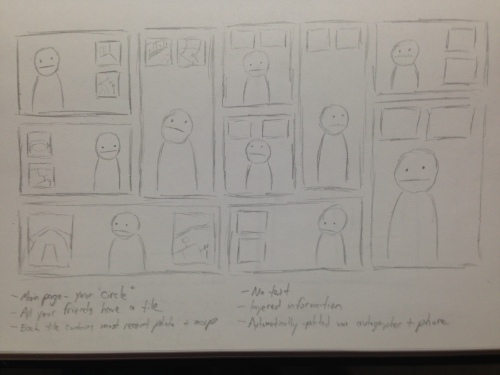 As you can see, despite the name upon which we settled, the grid originally consisted of rectangular tiles, drawing inspiration from the Metro theme in Windows 8 – you know, that thing that everyone hates and ditches in favor of the desktop anyway. Rectangles ended up being less modular for the purposes of a mockup, so we went for circles instead. It was easier to produce, and I suppose it was more in keeping with our professed design theme anyway.
As you can see, despite the name upon which we settled, the grid originally consisted of rectangular tiles, drawing inspiration from the Metro theme in Windows 8 – you know, that thing that everyone hates and ditches in favor of the desktop anyway. Rectangles ended up being less modular for the purposes of a mockup, so we went for circles instead. It was easier to produce, and I suppose it was more in keeping with our professed design theme anyway.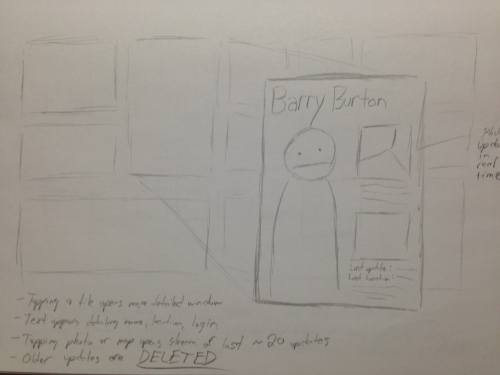
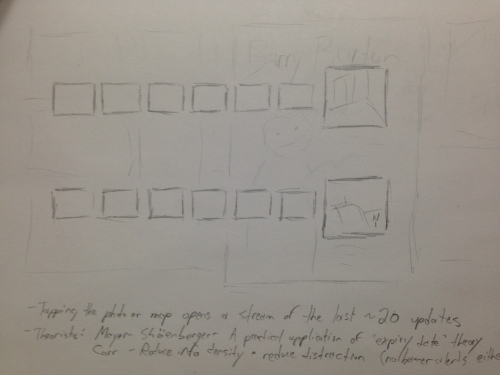 Here we have the final layer. Nothing much to comment on here that I haven’t already said.
Here we have the final layer. Nothing much to comment on here that I haven’t already said.
